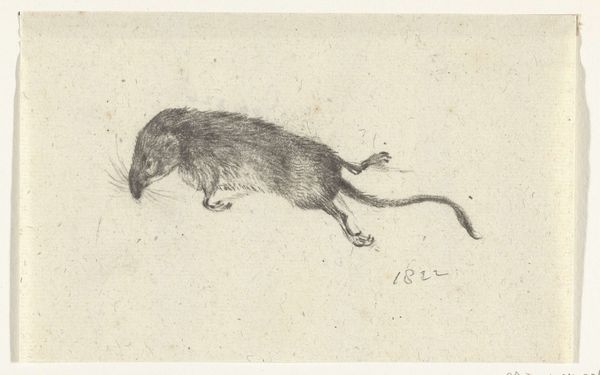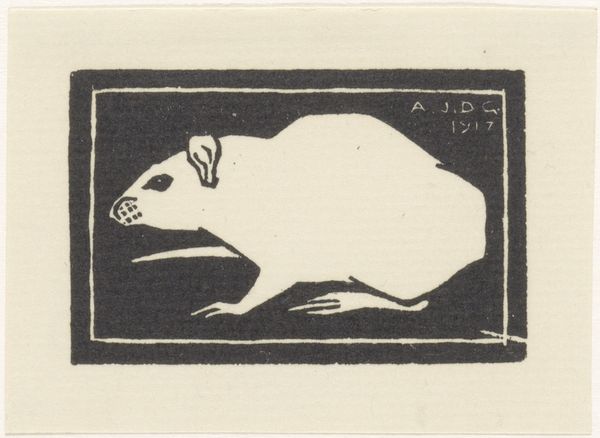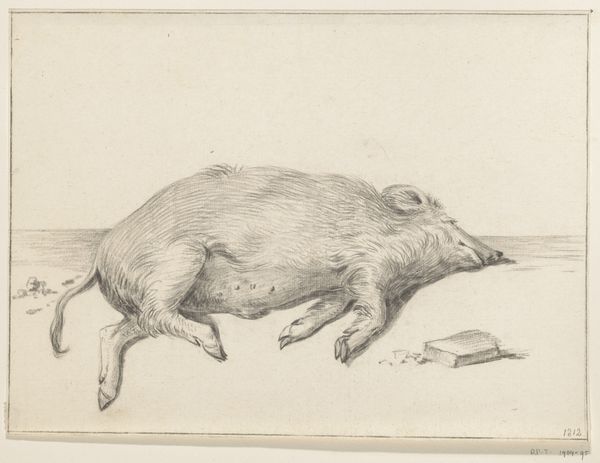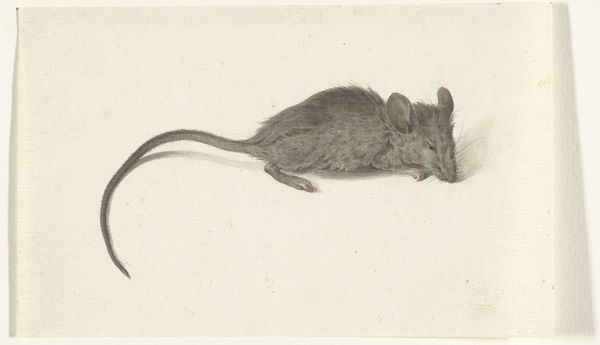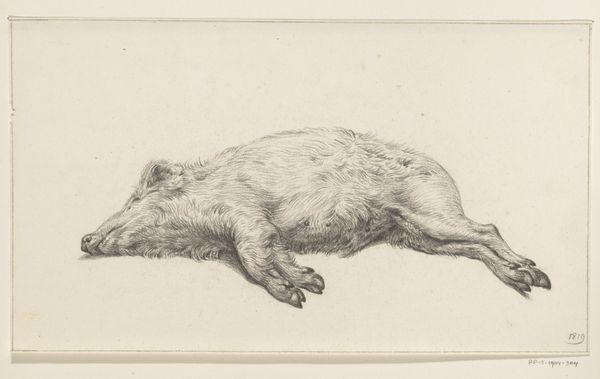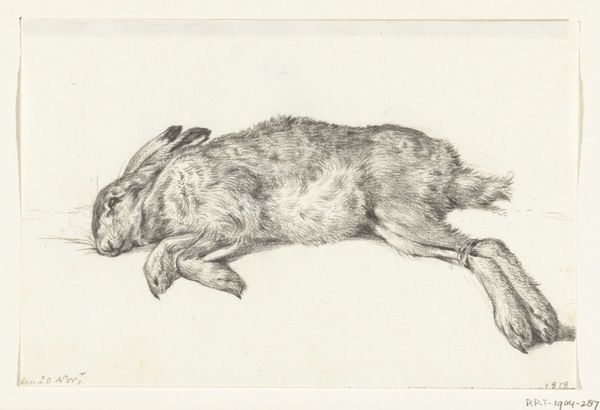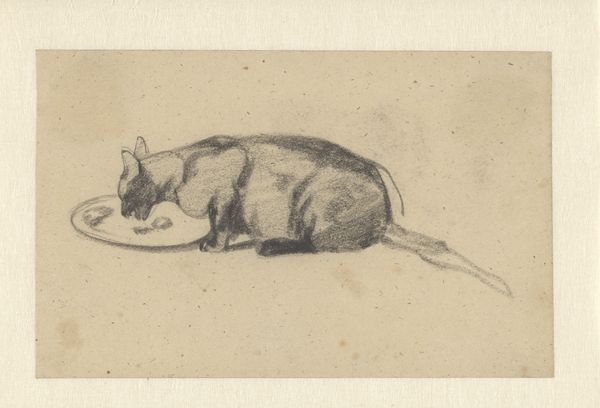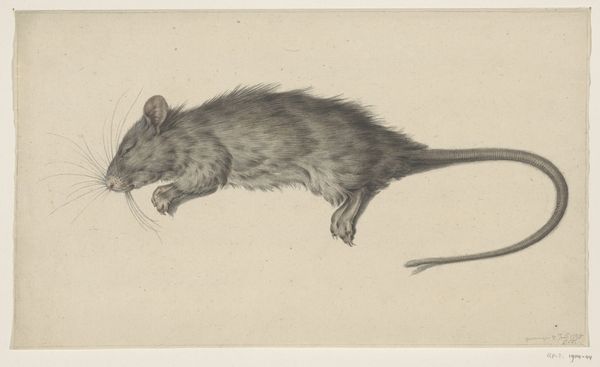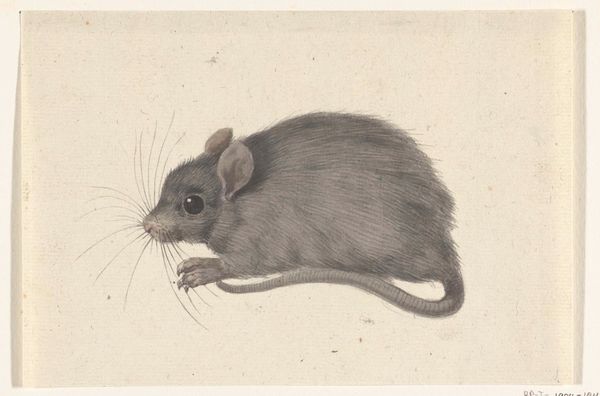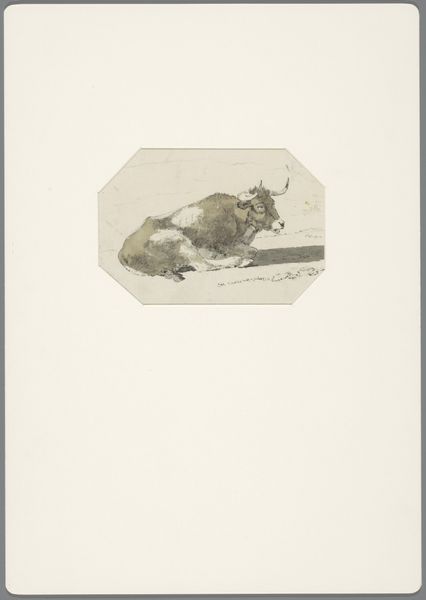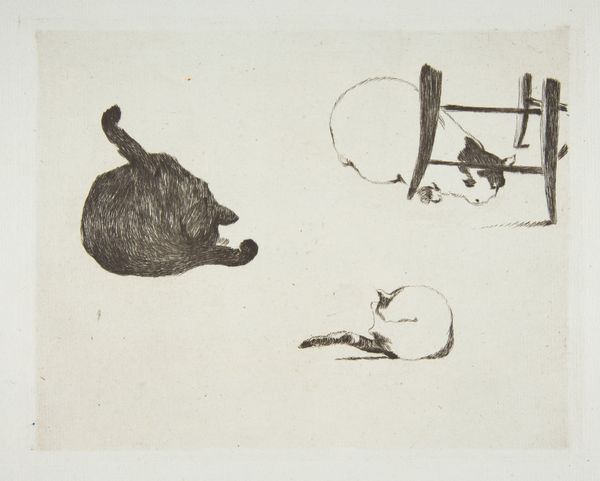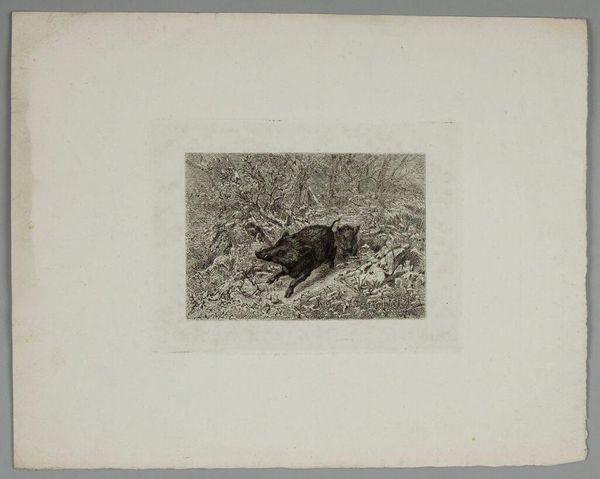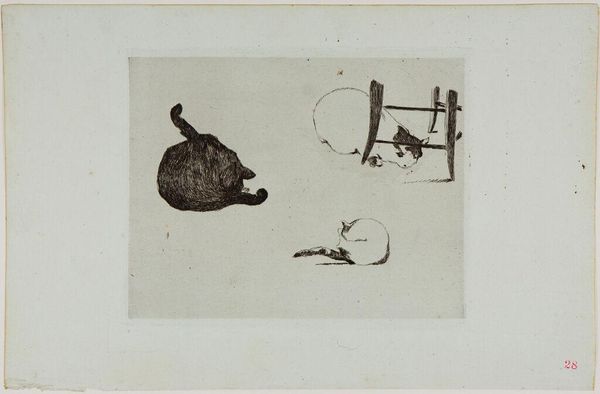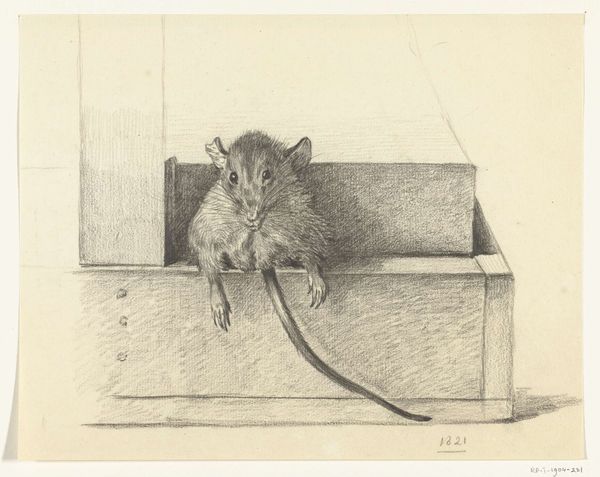
print, etching
#
baroque
#
animal
# print
#
etching
#
landscape
#
realism
Dimensions: height 70 mm, width 140 mm
Copyright: Rijks Museum: Open Domain
Curator: Let’s examine this etching from 1646 called "Dode mol", or "Dead Mole," by Wenceslaus Hollar, currently housed at the Rijksmuseum. Editor: Well, my first impression is one of unexpected intimacy. It’s a strangely endearing, yet slightly unsettling, portrait of this small, deceased creature. There's something stark about its isolation against the off-white background. Curator: Hollar's prints are incredibly interesting artifacts of the era. He captured detailed observations of the natural world. This mole, presented in such a straightforward manner, can tell us a lot about the relationship between natural science and art at the time. There was this drive to classify and document the environment, which played into a larger power dynamic, didn't it? Who gets to observe, who gets to classify, and for what purpose? Editor: Absolutely. Thinking about representation, I’m also considering that this is not simply about objective representation, but about seeing how Hollar saw. I wonder, what did a dead mole mean in 1646? What significance would it hold in people’s lives? The mole, typically hidden beneath the surface, becomes a subject of scrutiny when brought into the light. Curator: Hollar, of course, made numerous prints that were consumed and traded across Europe. They informed scientific illustration but also played into a culture of collecting curiosities, natural specimens among them. We might even examine Hollar's own role in the social and political context in the way his position shapes how we even see art. Editor: The materiality of the etching also fascinates me. The fineness of the lines creates a delicate, almost vulnerable feel. But that in turn suggests both mastery and detachment. Did Hollar view this mole with empathy or more as a scientific subject? Curator: The realism in Hollar's depiction suggests a drive to disseminate factual information. It underscores that shift during the Baroque period to observing the natural world closely to reveal unseen marvels of a greater creator. The work then, becomes intertwined with the intersection of art, scientific, and socio-political ambitions. Editor: So, beyond being a simple image, "Dode mol" invites contemplation on historical relationships. It urges a richer appreciation for historical meaning in both art and the scientific classification systems in culture at large.
Comments
No comments
Be the first to comment and join the conversation on the ultimate creative platform.
